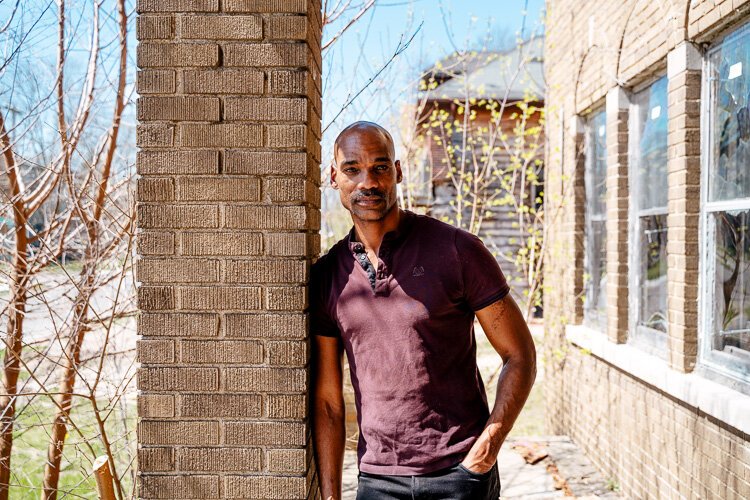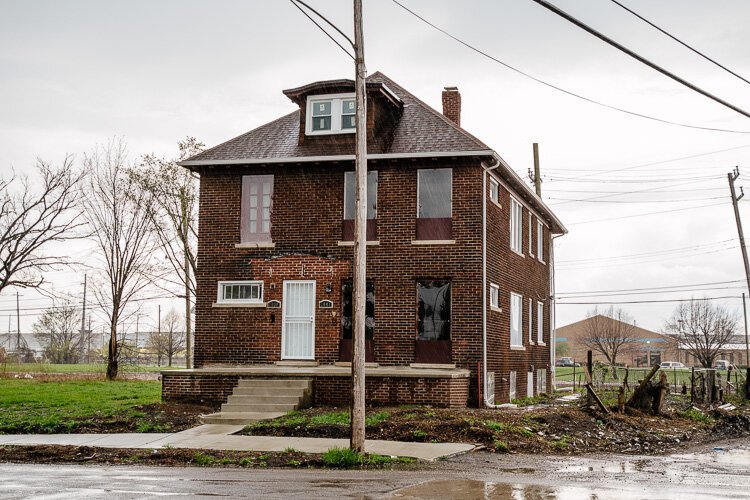This Detroit nonprofit is taking a novel approach to affordable housing: Landlord-occupied duplexes
Abandoned duplexes dot the Detroit landscape, and they can be harder to bring back than single-family homes. Thankfully, however, that challenge is sparking new innovative strategies.
Quincy Jones has more than a passing familiarity with duplexes.
As the director of a Detroit nonprofit called Osborn Neighborhood Alliance (ONA), he has seen his share of abandoned duplexes — a type of home that’s been divided into two separate living units — near his organization’s headquarters in the
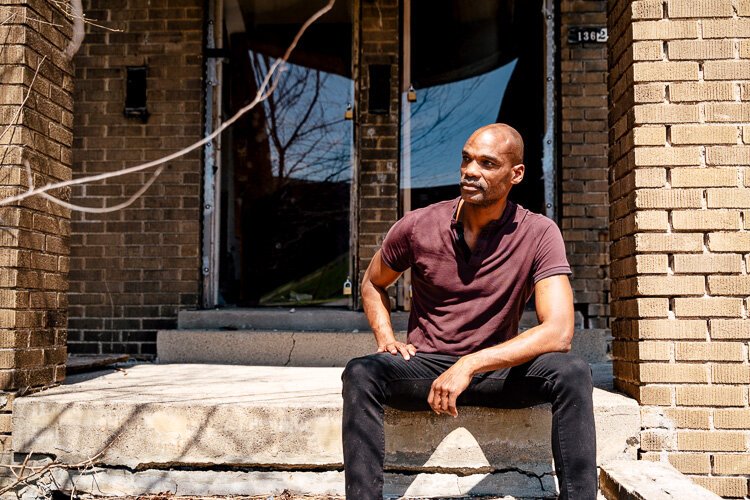
northeast part of the city. Beyond that, Jones grew quite familiar with two-family homes while living in New York State, where they are also quite common. And seeing how people used them there helped spark an idea in his mind.
“Out east, families buy homes as a duplex, because land’s at a real premium, then move the whole family in,” he says. “So I’m like, ‘This is a concept that we could bring back to the city.”
Detroit City Council recently approved Jones’ nonprofit to go forward with an innovative development project based on this idea. ONA is in the process of rehabbing three abandoned and blighted properties on Mapleridge Street into two-family duplexes.
Known as the Mapleridge Housing Project, the project will create a total of six new housing units on the block. The plan is to have each of the homes occupied by a landlord who will then rent out the other living unit in their home at an affordable rate to a section eight tenant.
“This is checking off a whole lot of lists,” says Jones. “It’s giving homeownership back to residents. It’s putting a property back on the city tax roll. It’s providing wealth building for the landlord and an affordable unit for someone who is in need of a rental unit.”
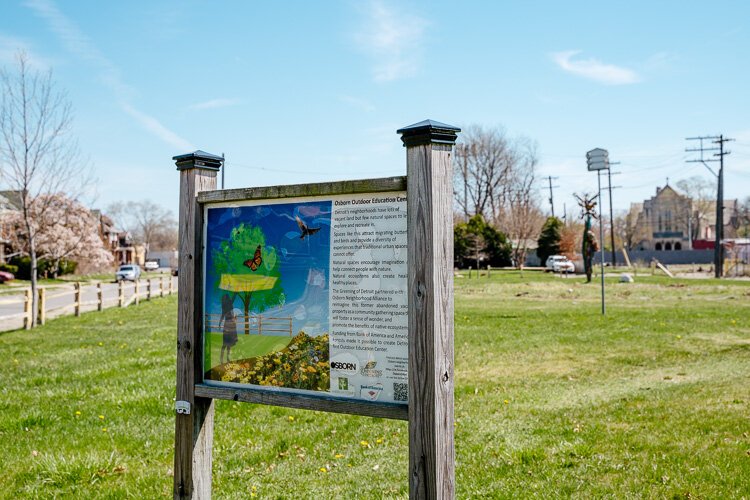
Rethinking duplexes
ONA’s work on Mapleridge Street didn’t start with the duplex project, however. The project’s true origins start with a clean-up effort that began around 2014. At the time, the nonprofit had been awarded a $50,0000 grant from Wells Fargo to remove blight from an area near its headquarters between Gratiot Avenue, Schoenherr Street, Mapleridge Street, and Pelkey Street. Partnering with Greening of Detroit, Bank of America, and American Forests, the organization later established a 44-square-foot outdoor learning garden with benches, rose bushes, and a mini-playground on the block.
From there, ONA set its sights on renovating some of the buildings on Mapleridge Street. The organization approached the city with its ideas for the block, which were greeted enthusiastically but the praise was also tempered with feedback about starting small and building up towards a greater vision.
“The Osborn Neighborhood Alliance is an example of the type of neighborhood group that we’re really excited to work with because they have a great core of really smart hardworking people, but nobody had any experience renovating or managing houses,” says Jason Friedmann, Detroit’s Public Private Partnership Director. “So they came to us and said what can we do to start doing some housing redevelopment and get these buildings back into reuse?”
Working with Detroit’s Housing and Revitalization Department, ONA identified some funds to do a neighborhood market analysis and began working with some consultants to develop their plan. To get their feet wet, they started out by renovating a single-family home at 13700 Mapleridge St., which was sold to a resident who had already been living in the neighborhood. Renovation cost about $60,000 and the home was sold for $55,000. But due to subsidies, the nonprofit was able to turn a profit on the project.
ONA brought its proposal for the Mapleridge Housing Project to Detroit’s Housing and Revitalization Department several times before they officially got on board with their plan. City Council approved the proposal on April 4.
The renovated duplexes will create a total of six living units between three houses, with enough capacity to house 36 individuals.
“they’re going to be totally gutted out,” says Jones. “They’ll have three bedrooms [each], and a living room, dining room, bathroom, and kitchen with granite countertops and stainless steel appliances. There will be new windows. So it’ll be a total rehab.”
ONA expects to break ground later this month or in early April and to have completed the project in four or five months. As the homes are all on the same block, roofs, windows, and other major construction can all be handled at the same time to minimize logistical issues.
Three homeowners have already been pre-approved for mortgages by PNC Financial Services. These mortgages are expected to run between $1,000 and $1,100 a month.
“PNC loved the concept and they put together a package where individuals can get qualified so the package is set up so they can include the potential rent coming in and apply that as income for the potential homeowner.”
As for the renters, Matrix Human Services currently has a waiting list of potential residents who qualify for Section 8 housing vouchers.
ONA also plans to build a new community hub in the neighborhood that will serve as its headquarters and offer amenities like collaborative working space, computer access, storage space, and a fabrication lab. And the Mapleridge Housing Project is being built not far from an area in the vicinity of Gratiot Avenue and 7 Mile Road that is being revitalized as part of the city’s public-private Strategic Neighborhood Fund effort.
Rose Dawson, a retired hospital customer service rep, lives across from 13700 Mapleridge St., the single-family home ONA rehabbed and sold on the street. She believes the nonprofit’s development efforts have considerably reduced blight and crime in the block where her family has lived since the late 1970s, and is hopeful that renovating the duplexes will further improve the area.
“I’m very excited about it, because, for us homeowners, we live decent,” she says. “And if everything around you is not up to standards, it makes your house look bad. So If the [duplexes] are sold to the right families. I think we’ll have a nice, little, clean neighborhood.”
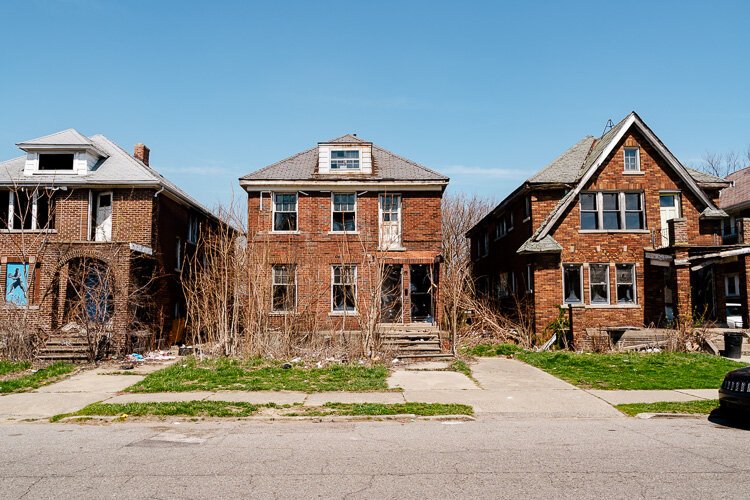
A multiplicity of approaches
Duplexes, derelict and otherwise, can certainly be found beyond the borders of the city’s Osborn neighborhood. Friedmann estimates there are hundreds of them around the city of Detroit, and finding someone to renovate a duplex that’s been abandoned and neglected can sometimes be an endeavor.
“They’re a bit challenging, because they’re a pretty good size, so it costs a lot of money to do the renovation,” he says.
Creating landlord-occupied duplexes is a way of handling housing in Detroit, according to Friedmann, but it’s far from the only avenue being pursued to revive homes of this kind that have been abandoned. As with other types of homes, Detroit’s Housing and Revitalization Department frequently issues requests for proposals (RFPs) to develop duplexes around the cities. Some of the strategies it’s pursued have included selling duplexes individually, selling them in small bundles, and selling them in bundles with the intention of having the developer turn them into small condos.
In the Islandview/Greater Villages area of Detroit, the city in partnership put out requests in 2018 for proposals to renovate duplexes connected to the area’s neighborhood framework plan. Through that planning process, city officials learned that preserving existing housing was a priority for local residents, so they committed to preserving local duplexes in the area.
They eventually found two developers to tackle the projects: The nonprofit Develop Detroit was chosen to transform seven formerly city-owned duplexes spread out between Kercheval Avenue and Charlevoix Street north of Butzel Community Center into 14 condo units. And Detroit developer Kai Bowman was selected to renovate four duplexes owned by the Detroit Land Bank Authority (DBLA) located nearby between Charlevoix Avenue and Mack Avenue.
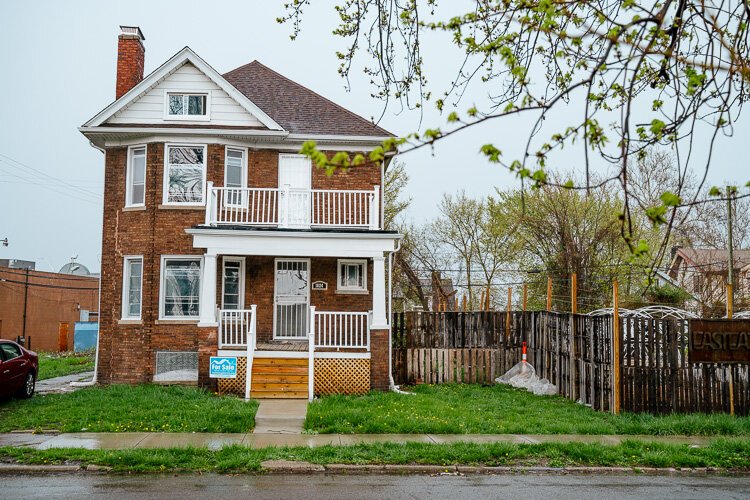
In Jefferson Chalmers, the city and the DBLA are collaborating on several “white box” duplex projects — formally known as the Jefferson Chalmers Duplex Rehabbed & Ready to Renovate Project — that are also connected to the area’s neighborhood framework plan. “White box” is a construction term that means builders have taken care of the basic elements of a project, but has left other aspects like flooring and interior design unfinished for the future owners to customize. It’s an approach the DBLA regularly takes advantage of with its Rehabbed & Ready Program, which uses philanthropic money to renovate blighted homes and sell them on the traditional real estate market.
The City of Detroit and DBLA collaboration in Jefferson Chalmers will begin with duplex properties at 1039 and 1024 Navahoe St, which are currently for sale. After those two buildings are sold, the proceeds will be used to partially renovate two additional duplexes at 639 and 767 Kitchener St. By partially restoring the duplexes, DBLA is able to offer them at lower prices than fully renovated homes.
“This work is designed to limit the need for additional demolition in the Jefferson Chalmers neighborhood and maximize the preservation of remaining housing stock to support a future of vibrant density,” says DLBA spokesperson Alyssa Strickland-Knight. “The DLBA anticipates that the partial renovation of these properties will make the structures more accessible to buyers, enabling the organization to move them out of public ownership.”
With no shortage of empty duplexes sitting around in the city, the city is eager to work with developers to find ways to renovate and get them occupied. Friedmann sees
Detroit’s Housing and Revitalization Department can be a valuable ally that can connect them with opportunities and help guide them through the process of getting their developments approved.
And looking forward, he’s interested in watching the progress of efforts like the Jefferson Chalmers Rehabbed & Ready to Renovate Duplex Project and ONA’s Mapleridge Housing Project to see how the city might replicate them in the future.
“I’m looking forward to seeing how successful these recent projects are, especially the one with the Osborn Neighborhood Alliance, because they’ve put in so much work,” says Friedmann. “It’s taken several years, but now it’s actually going to happen. Their street is going to have six new duplex units.”
This is part of the Block by Block series, supported by FHLBank Indianapolis, that follows minority-driven development and affordable housing issues in Detroit.
Photos by Nick Hagen.
